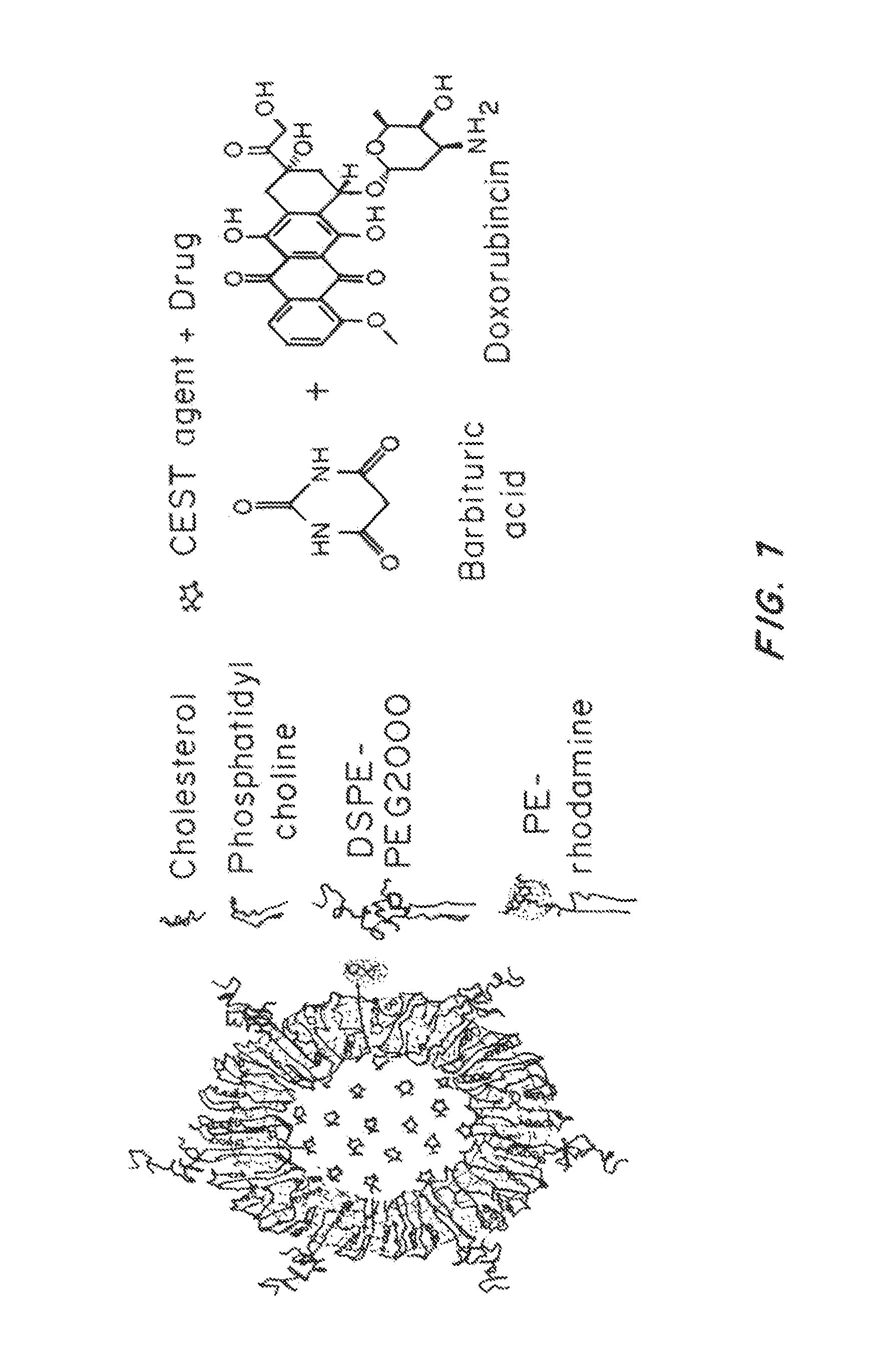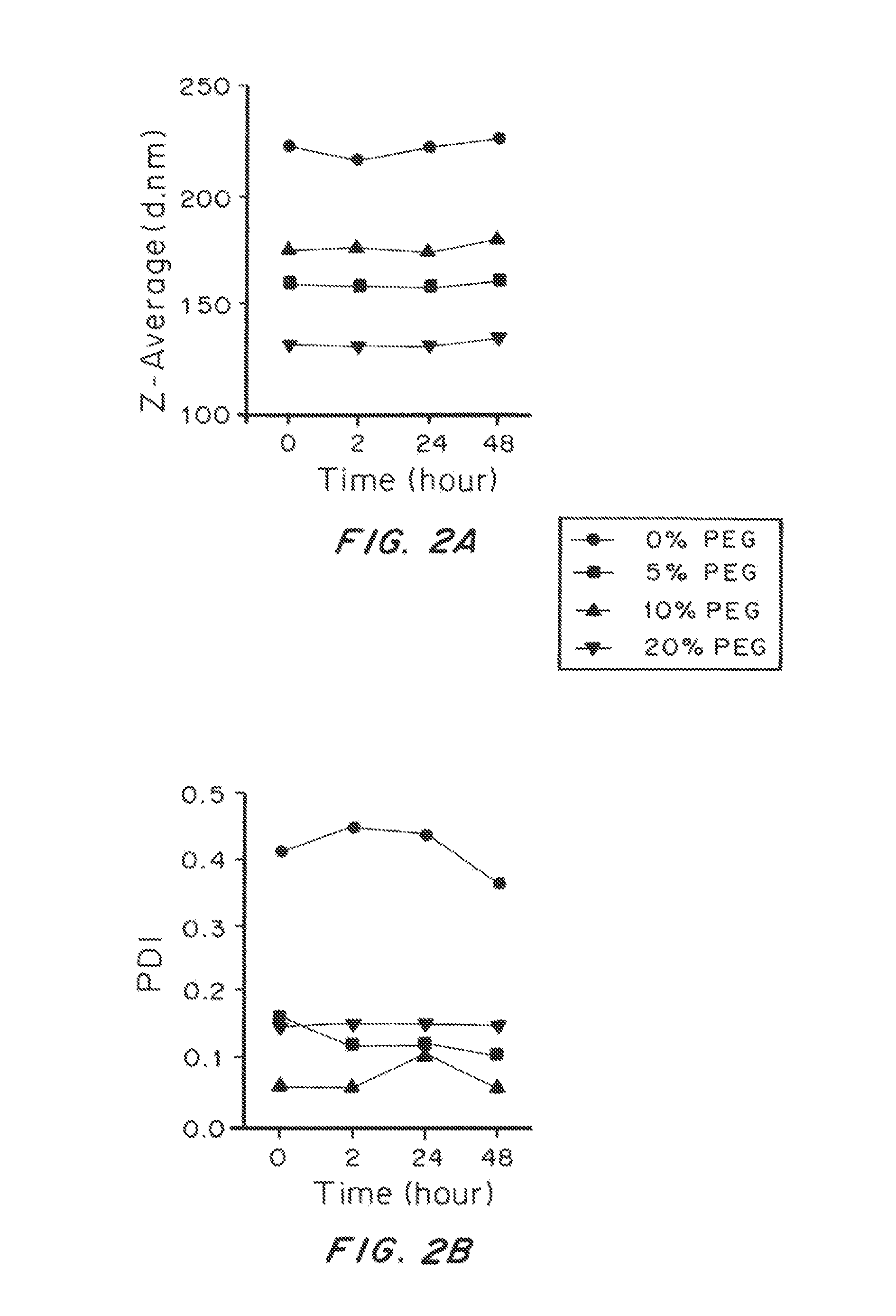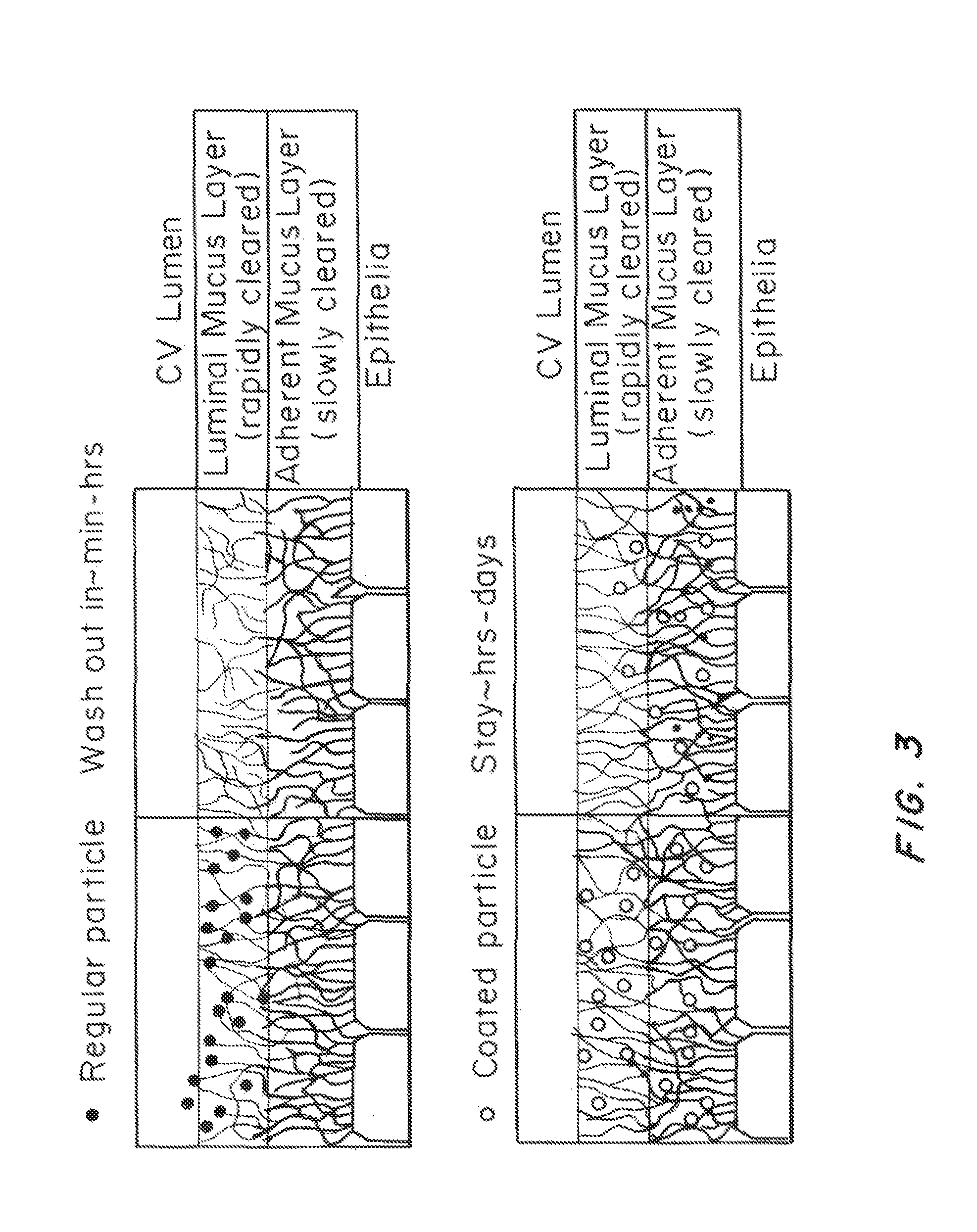Lipid-Based Drug Carriers for Rapid Penetration Through Mucus Linings
- Summary
- Abstract
- Description
- Claims
- Application Information
AI Technical Summary
Benefits of technology
Problems solved by technology
Method used
Image
Examples
example 1
Preparation of Mucus-Penetrating Liposomal Particles
[0203]Liposomal particles were prepared using a conventional thin film hydration and extrusion method. 12 mg of a mixture of phosphatidylcholine (PC, e.g., egg PC or hydrogenated soy PC), PEG-phosphatidylethanolamine (PEG-PE) and cholesterol (CHOL) were dissolved in chloroform at pre-determined molar ratios. A small proportion of Rhodamine labeled PE (Rho-PE) was added to the mixture to enable visualization of the liposomal particles via fluorescence microscopy. The mixture was placed in a rotavap with reduced atmosphere pressure to evaporate the organic solvent. The resulting lipid film was hydrated with phosphate buffered saline (PBS) while agitated using a water bath sonicator to form multi-lamellar vehicles (MLV). The suspension was subsequently extruded through polycarbonate filters with pore sizes of 400 nm and 200 nm to generate unilamellar vehicles (LUV, i.e., liposomes with single bilayer membrane).
[0204]To load CEST agent...
example 2
Characterization of Liposomal Particles
[0207]The size and zeta-potential of liposomal particles were measured using dynamic light scattering and laser Doppler electrophoresis, respectively. Data are shown in Table 2.
TABLE 2Compositions of liposomal particles and their basic characterizationSizeMolar Ratio (%)Sample(Z-ave)PolydispersityZeta Potential(PC:CHOL:Rho-PE:PEG-PE)Abbreviation (d. nm)Index(mV)0.28:0.72:0.002:0.00 0% PEG2220.41−2.50.26:0.68:0.002:0.05 5% PEG1600.16−2.00.25:0.65:0.002:0.1010% PEG1750.06−2.20.22:0.58:0.002:0.2020% PEG1320.15−1.6
[0208]The size of the liposomal particles of all tested compositions ranged from 130 to 230 nm, well below the mesh dimension of human CVM (estimated to be >500 nm). Higher ratio of PEG-conjugated lipids reduced the size of the particles, likely due to the formation of liposomal micelles. A high proportion of cholesterol was used to enhance the stability of the liposomal particles.
example 3
Stability of Mucus-Penetrating Liposomal Particles
[0209]To test the stability of the liposomal particles of different compositions, we incubated the particles in phosphate buffered saline (PBS) at 37° C. and monitored the change of size and polydispersity over time, as shown in FIG. 2. The size and polydispersity index (PDI) of the particles were steady for all the experimental groups for over 48 hrs. However, the PDI of liposomal particles with no PEG was consistently higher than other experimental group, indicating their poorer quality and weaker stability as compared to the PEGylated ones.
PUM
| Property | Measurement | Unit |
|---|---|---|
| Fraction | aaaaa | aaaaa |
| Fraction | aaaaa | aaaaa |
| Time | aaaaa | aaaaa |
Abstract
Description
Claims
Application Information
 Login to View More
Login to View More - R&D
- Intellectual Property
- Life Sciences
- Materials
- Tech Scout
- Unparalleled Data Quality
- Higher Quality Content
- 60% Fewer Hallucinations
Browse by: Latest US Patents, China's latest patents, Technical Efficacy Thesaurus, Application Domain, Technology Topic, Popular Technical Reports.
© 2025 PatSnap. All rights reserved.Legal|Privacy policy|Modern Slavery Act Transparency Statement|Sitemap|About US| Contact US: help@patsnap.com



